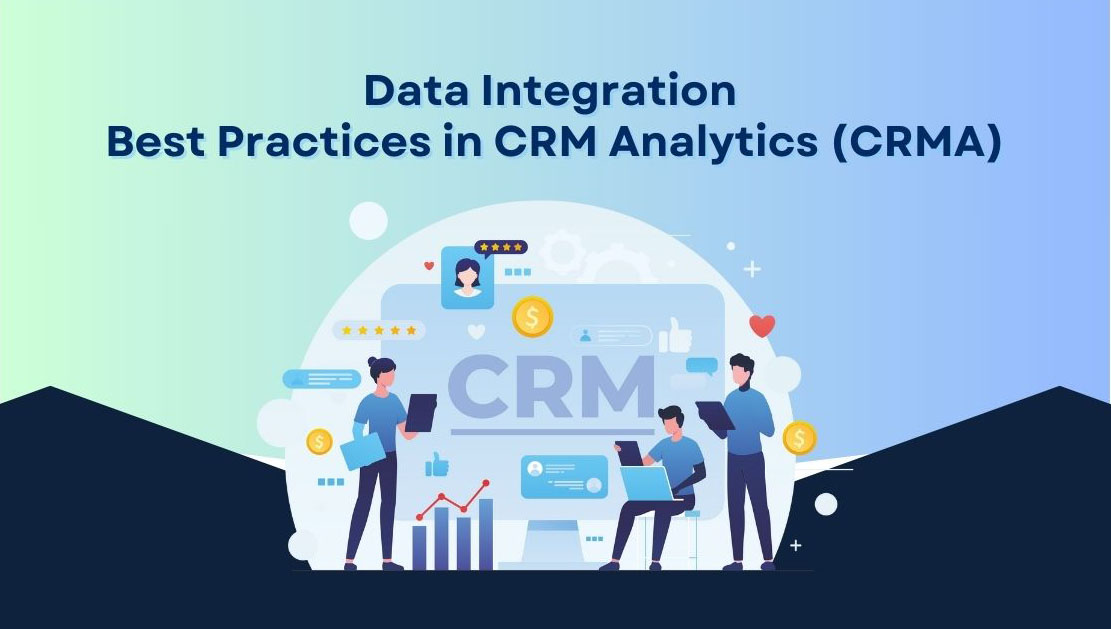Integrating data effectively is crucial for unlocking the full potential of Salesforce CRM Analytics (CRMA), also known as Tableau CRM. Accurate, well-organized data fuels insightful analysis and drives better business decisions. This blog will explore best practices for seamless data integration in CRMA to ensure your analytics are accurate, efficient, and scalable.
1. Know Your Data Sources
- Identify and document all data sources, including Salesforce objects and external databases.
- Prioritize integrating data that supports your key business metrics.
Example: If you manage customer support and sales, include Salesforce objects like Cases for support data and Opportunities for sales data, as well as external data from an ERP system for inventory tracking.
2. Utilize Dataflows and Recipes
- Use Dataflows for complex data transformations and Recipes for simpler data preparation tasks.
- Schedule Dataflows to run during off-peak hours to enhance performance.
Example: Create a Dataflow to aggregate monthly sales data by filtering records from the Opportunity and Account objects. Use a Recipe to merge customer demographic data from a CSV with Salesforce contacts for personalized marketing.
3. Ensure Data Quality
- Implement validation rules to maintain data accuracy and completeness.
- Cleanse data by removing duplicates and handling missing values before integration.
Example: Implement a validation rule that requires every new lead to have an email address. Clean your data by removing duplicates, ensuring there’s only one record per email in your leads dataset.
4. Incorporate External Data
- Leverage external data sources to enrich your analysis, using Data Connectors and MuleSoft for integration.
- Ensure external data complements your Salesforce data for deeper insights.
Example: Use Data Connectors to pull marketing data from platforms like Salesforce Connectors into CRMA, allowing you to analyze the correlation between sales conversions.
5. Optimize for Performance
- Streamline Dataflows by minimizing unnecessary steps and filtering data early in the process.
- Monitor Dataflows for errors and set up alerts for failures.
Example: In a Dataflow pulling millions of records, filter out irrelevant data early by including leads from the last six months, which reduces the dataset size and speeds up processing.
6. Maintain Security and Compliance
- Implement role-based access control to safeguard sensitive data. And ensure compliance with regulations like GDPR.
- Regularly review access logs to safeguard data integrity.
Example: Set up role-based access so only marketing team members can view customer demographics while financial data access is restricted. Regularly check access logs to comply with GDPR.
7. Plan for Scalability
- Design flexible Dataflows that can easily adapt to growing datasets.
- Regularly audit performance and make necessary adjustments to keep integration efficient.
Example: Create modular Dataflows that can easily incorporate new data sources. For instance, if you add data from a new customer service platform, you should be able to integrate it without disrupting existing processes.
Conclusion
Data integration in Salesforce CRM Analytics (CRMA) is key to deriving meaningful, actionable insights. By following these best practices—understanding your data sources, optimizing Dataflows, ensuring data quality, leveraging external data, and maintaining security—you can build a robust analytics foundation that scales with your business needs. With effective data integration, your organization will be better positioned to make informed, data-driven decisions and maintain a competitive edge.


